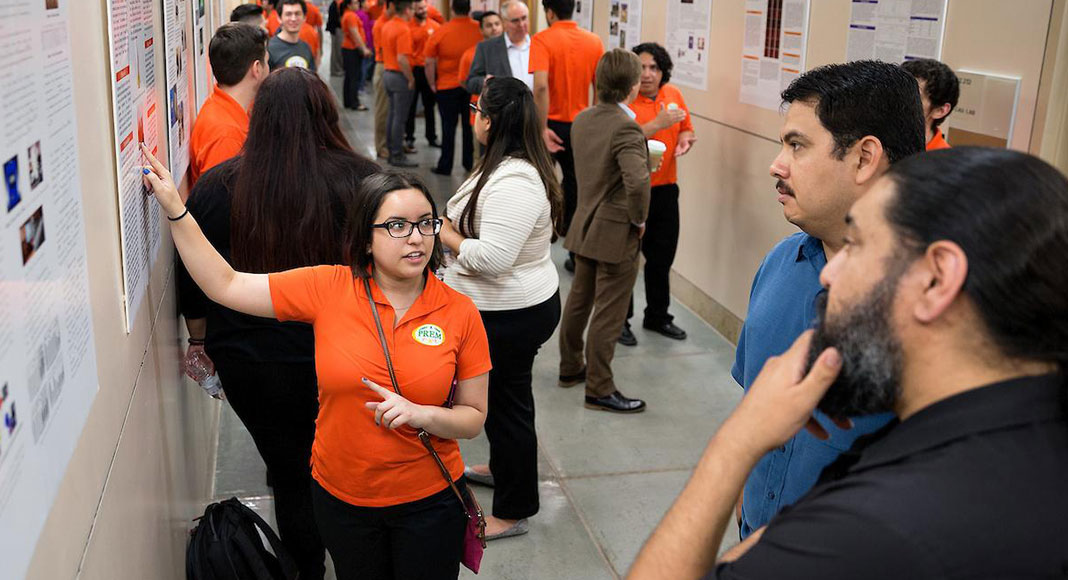
Texas Border Business
By Karen Villarreal
RIO GRANDE VALLEY, TEXAS – UTRGV engineering students and faculty will be one of eight collaborative research teams around the United States dedicated to developing cutting-edge nanomaterials – materials manufactured and used on a very small scale and developed to exhibit increased performance characteristics, like strength or conductivity.
The research at UTRGV is funded by a $4.2 million grant from the National Science Foundation and is made possible for a third six-year cycle starting July 2021 by the NSF’s Partnerships for Research and Education in Materials (PREM) program.
The PREM program at UTRGV is led by Dr. Karen Lozano, Julia Beecherl Endowed professor in the Department of Mechanical Engineering and director of the university’s Nanotechnology Center.
Lozano is the principal investigator on the grant, titled “UTRGV-UMN Partnership for Fostering Innovation by Bridging Excellence in Research and Student Success.” UTRGV’s PREM team combines efforts from seven departments at UTRGV and two from NSF’s Materials Research Science and Engineering Center at the University of Minnesota (UMN), to promote fundamental understanding and development of nanofiber system technology.
Lozano said the partnership will empower hundreds of UTRGV students, most of them first-generation college students, to collaborate with UMN’s large-scale research facility. Through projects that develop their basic knowledge and skills in materials science, students will have a chance to contribute to cutting-edge research while gaining first-hand experience in STEM work environments.
Debasis Majumdar, director of the NSF PREM program, said a focus on the diversity of students, faculty and partners is paired with the revitalization of under-resourced research to form the foundation of PREM.
“This has been the source of many successful outcomes,” Majumdar said. “It expands national innovation capacity and a much-needed, highly trained and diverse workforce, propelling U.S. leadership in STEM fields.”
A SUCCESSFUL FOUNDATION
Lozano said UTRGV’s PREM program has aligned with the NSF’s goals since it was first funded in 2009, and the highly competitive grant has been funded repeatedly since then due to its success.
Students and faculty involved in the program in the past two cycles produced several patent-pending technologies and more than 200 peer-review published journal papers about the application of nanofibers in medicine and energy, she said.
Additionally, all 302 of its previously participating students graduated, and more than half of the undergraduate students went on to graduate school.
“Increasing the enrollment of underrepresented minority students in graduate school achieves another goal of this project,” Lozano said. “The team has effectively merged excellence in furthering scientific knowledge with student development.”
COLLABORATIVE EFFORTS
The success of the nanomaterials project at UTRGV is bolstered by the PREM team’s interdisciplinary nature. In addition to Lozano, three co-PI’s from UTRGV lead the project: Dr. Cristina Villalobos, professor in the School of Mathematical and Statistical Sciences; Dr. Arturo Fuentes, professor of mechanical engineering; and Dr. Mohammad Uddin, associate professor of chemistry.
All will work with Dr. Timothy Lodge, UMN’s director of the Materials Research Science and Engineering Center, Lozano said, in a combined approach that allows them to better support students on their high-tech research projects and make new discoveries that build from each other’s disciplines.
Specifically, Lozano said, this team combines UTRGV’s strength in nanofiber process-structure characterization with UMN’s skill in design and characterization of nanoscale structures.
“These collaborative PREM projects develop students’ analytical skills, creativity and innovation, leadership, teamwork and work ethic,” she said. “They will become visionaries and entrepreneurs in the materials science and engineering workforce.”














